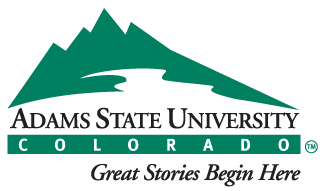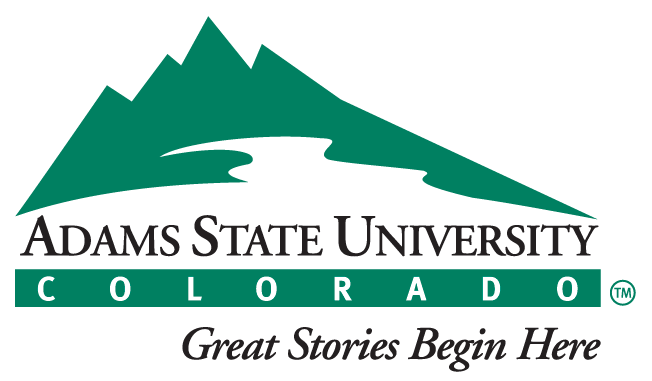Article by Linda Relyea
Ellen and Wayne Evans stand before the entrance to the Arizona – Sonora Desert Museum.
Wayne O. Evans ’62 has come a long way since graduating from Monte Vista High School and then Adams State University ’62. But he hasn’t forgotten where he came from and continues to support his alma maters and the students who attend them.
Adams State was "life-changing" for Evans. "I enjoyed studying and the classes and the professors were awesome. My time spent at Adams State was some of the happiest and most challenging of my life."
Graduating Cum Laude from Adams State with a Bachelor of Science was a highlight for him and his family. "I was the first of the Evans to get a college degree."
Evans recently established the MVHS-Adams Scholarship Endowment for Monte Vista High School graduates to attend Adams State. Scholarship recipients must be a graduate of MVHS with at least a 2.5 GPA. Service to the community is a major component in candidate selection. For more information about the scholarship, or to donate, visit MVHS-Adams or call the ASU Foundation Office at 719-587-7609.
"I believe colleges and universities should train future leaders, teachers, social workers, and those who improve life," Evans said. "The purpose of college/universities is not to teach facts but to teach students how to learn."
When first enrolling at Adams State, he planned on becoming a teacher but his aptitude for science and math lead to Evans switching majors. "I also discovered you could take a heavy course load for no extra charge." He took up to 22 credit hours per quarter. "This accelerated schedule allowed me to graduate in three years. I took almost every math, chemistry, and physics class available, resulting in a triple major extended."
Special memories
Some lessons didn’t come from a book or a calculation. In a chemistry class, taught by Dr. Kay O. Watkins, emeritus professor of chemistry, students were assigned a research paper. After grading, Watkins placed the papers in two piles, "85 in one stack and 15 in the other." The large stack received failing grades and the shorter pile, all received an A or B. Evans’ paper received an A. Those who failed did not cite their sources. "Dr. Watkins said, ‘in science and life we give others credit for their work.’ A lesson that remained with me for my entire career," Evans added.
During his college career he concentrated his efforts on mathematics and the sciences, now Evans said he would take more classes devoted to art and music. "A good book, music, and painting are my focus now. Subjects once very important, like thermodynamics, differential equations, analytic chemistry have faded in importance. We should take time to enjoy sunsets."
As a student, Evans lived in the Kit Carson Dormitory. The environment of a dorm differed greatly from his home in Monte Vista. "The room was a ten by fifteen cubical, like a monk’s cell, with a tile floor, two iron bunk beds, two dressers, two desks and no closet. We had to walk down the hall to for bathroom and shower. I was shocked. It was like a cheap hotel compared to my bedroom." But, as other students arrived, friendships were developed. "Kit Carson soon became my college home."
Due to his rigorous academic schedule, he had little time to "socialize" but does remember the 1962 spring break when residents of Kit Carson Dormitory pushed a bed on bicycle wheels, along with a bag of San Luis Valley potatoes to Denver. He said after the local media started coverage, "excitement swelled at Adams State. Cars with helpers were leaving Alamosa hourly."
After finishing his classes, he caught up with the bed outside of Buena Vista. "We were dropped off at half mile intervals to do our part." Once the Denver press started following the event, "two miles of cars followed the bed." Evans said before reaching downtown Denver, they were stopped by the Colorado Highway Patrol. "They promised to take the bed and bag of potatoes to see governor the next day. The project was a success and no one got hurt. It was a great spring break from studies in 1962."
Professional success
After college graduation, Evans completed a Master of Science in mathematics from Kansas State University. He then accepted a position with IBM in Rochester, Minnesota. "I worked in the development laboratory as a programmer, system designer, and team leader."
Evans had the "unique experience" to work on a joint study with the Mayo Clinic and IBM. In 1974-5 they investigated the use of monitoring patients after open heart surgery with computers. He also worked on parts of the operating system of the IBM S/3, S/38, OS/400, computer systems used by companies worldwide. "I contributed to the software in use today and IBM holds a patent in my name."
In 1991, Evans elected to take early retirement from IBM and started his own consulting company helping customers secure their IBM OS/400 systems. While at IBM, and as a consultant, he spoke at conferences in the USA, Canada, Europe, and South America.
"My career was jump started by an Elks Club scholarship to Adams State. As soon as I began earning, my wife and I began to pay it back."
Evans retired from consulting in 2005, and now lives in Tucson, AZ, where he spends his days working on his computer, swimming, growing cactus, and the occasional hike in the Sonora Desert. He is a member of the Tucson Estates Property Owners Association and actively participates in local politics, and designs and implements web pages for non-profit organizations.
He and his wife of 53 years, Ellen, have three children and four grandchildren.


